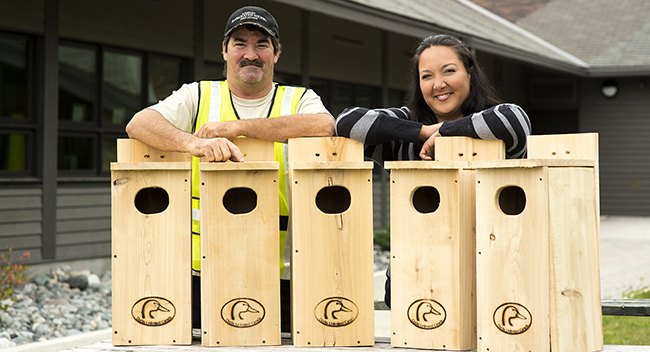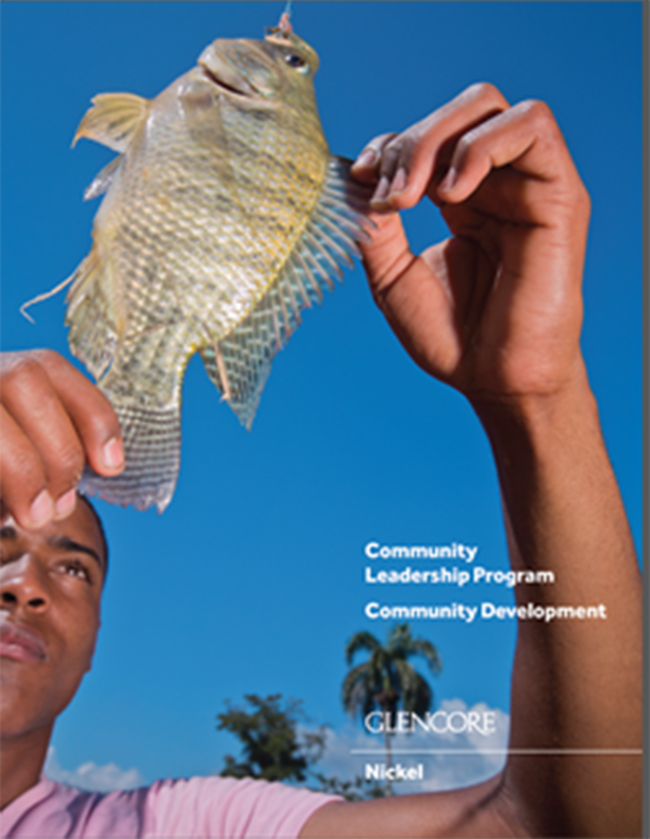Wahnapitae leads way in sustainable development

Wahnapitae First Nation’s Sustainable Development Department’s primary objective is to effectively manage our territory and development in order to ensure that there are resources available for our future generations.
The department aims to provide a holistic and comprehensive approach to environmental management by implementing specific resource management targets and working with our industry and government partners to complement mutual resource objectives.
The Department supports informed decision making and utilize the most accurate up-to-date information and technology to develop pro-active environmental solutions. It utilizes a planning tool that integrates environmental, economic development, cultural/social and leadership priorities while maintaining accurate baseline data collection, protecting aboriginal rights and title and using our traditional knowledge to inform project design and decision making processes.
The Wahnapitae First Nation recognize the importance of relationship building and continuously work with industry, government and First Nation bodies to foster effective positive relationships that support principles of sustainable development. We understand that our territory it is a multijurisdictional environment which requires coordinated management of our resources. It is with this understanding that we enhance relationship building efforts related to resource development in our territory. We have an eco-system based approach to resource management.
The Wahnapitae First Nation respect our responsibility to share our specialized knowledge. We work with our friends in our communities to help each other grow and actively participate in environmental and resource management. We have worked with Henvey Inlet First Nation to help scope out and develop GIS systems and Waste Diversion practices. We have presented on Land Use Planning and Eco-Based approaches to the Algoma University Taking Care of Our Land Symposium. We also showcased our GIS solutions at the Google Firelight Indigenous Mapping Workshop in Waterloo this past summer. We co-hosted an Environmental Assessment workshop with the Chiefs of Ontario (Summer 2014).
Wahnapitae has set up the Tahgaiwinini Technical & Environmental Services Group, a First Nation owned and operated company with extensive experience working with First Nation Communities, government and industry. Tahgaiwinini provides and promotes active participation in natural resource management and strives to enhance informed environmental solutions. They specialize in providing a wide variety of environmental services for a diverse group of clientele.
Cheryl Recollet, project lead of Tahgaiwinini emphasizes that the Group appreciates the unique Anishinabek relationship the land and water and recognize the importance of environmental sustainability, land use, and community development. “Our services are tailored to meet the requirements of each client and are delivered by qualified personnel. Team members are trained in various environmental protocols and best practice techniques to provide a suite of environmental solutions. They have been certified by the Canadian Environmental Certification Approvals Board. “
This group provides comprehensive environmental effects monitoring for water quality, species at risk, and environmental photo monitoring. The company has the expertise and software to conduct GIS applications and GIS analysis.
Tahgaiwinini specializes in conducting environmental assessment and regulatory permitting. The Group has worked with community partners and industry on the following wide range of projects:
- Phase 1 and Phase 2 Site Assessments;
- Environmental Impact Statement Development & Review;
- Environmental Compliance Approvals (ECA) & Review;
- Regulatory Requirements Review – Certificates of Authorization, Permits to Take Water,
- Closure Plan Development & Review;
- Natural Environmental Level 1 & 2 Technical Reports
Tahgaiwinini also provides geospatial analysis which can enhance community development, land use planning, and natural resource management, use and occupancy studies, traditional knowledge management, participatory mapping and a number of infinite applications required to enhance informed decision making and support natural resource management.
Tahgaiwinini has partnered with Glencore at its Sudbury Integrated Nickel Operations to promote sustainability. Glencore’s 2014’s report states “We recognize that our work can have an impact on our society and environment. We care profoundly about our performance in compliance, environmental protection, human rights and health and safety.”
One of the most material issues to Glencore is engagement with and working with indigenous peoples. The Glencore report states that “it recognizes and seeks to understand the rights, interests, special connections to lands and waters and the perspectives of indigenous peoples. We manage our operational footprint to minimize impacts on traditional ways and livelihoods, and pro-actively engage with Indigenous communities on opportunities of mutual interest.”
In 2014, Glencore renewed its participation agreement with Wahnapitae First Nation while the second phase of its Sudbury training program with Sagamok Anishnawbek got underway in 2014 to provide classroom and on-the-job training to Sagamok band members. These members are now employed as mine labourers. As part of its indigenous engagement program, Glencore sends quarterly updates to all four Indigenous groups in the Sudbury area on its exploration activity.
Cheryl Recollect, who is also Wahnapitae’s Director of Sustainable Development describes the relationship with Glencore: “We have a very effective relationship with Glencore. We share our local knowledge of the environment with them and they share their technical expertise with us, so we can enhance our skills and expand our business beyond our watershed. We view our relationship as a tool for economic development of our human resources, rather than just simply our natural resources.”



